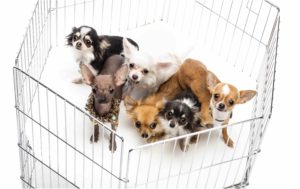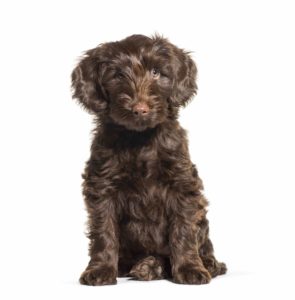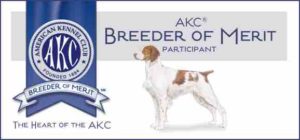- May 17, 2020
- Posted by: optimaadmin
- Category: Coaching The Handler, Which Dog & When

Must Knows To Select the Best Dog for You – #1 of 5, Where to Buy Your Dog
I have been thinking about this series for a long time and have finally decided it is time to get my thoughts and research on paper. The reason I feel compelled to write about this topic is to help future dog buyers know the ins and outs of what to look for because what you see is not always what you get. This blog is going to describe the various buyer options available.
to write about this topic is to help future dog buyers know the ins and outs of what to look for because what you see is not always what you get. This blog is going to describe the various buyer options available.
What you may not know is that some sellers misrepresent who they are and what they do. I have seen too many clients select a new puppy without doing much due diligence and be very surprised with the dog’s behavior and/or health concerns once they bring the dog home. I believe that if you have this important information top of mind you will make a better decision. The sources I mention are not in any particular order (e.g. best to worst or visa versa).
 RESCUE
RESCUE
Rescue groups are funded mainly by donations and most of the staff are volunteers. Often they foster their animals in volunteer’s homes and coordinate adoption days at various businesses. Each animal is given an exam and necessary veterinarian care is provided which can include spay/neuter and vaccinations. As part of their process the organization may do a home visit to ensure the animal is going to a safe, clean home.
SHELTERS
Most shelters are funded by donations and some receive funding from the government and other sources. They  usually house their animals in on-site kennels. Frequently the animals come to the shelter from vaious means, for example some people surrender their pet, sometimes they are picked up along the road or a weather disaster happens and animals are transported to new areas of the country to be rehomed. When you choose to adopt from a shelter often they vaccinate, neuter/spay and sometimes microchip the animal at their expense. The selection process can be quick in that you can visit the facility, spend time with the animal in a small room, maybe go for a walk, make a selection and may be able to take the pet home that day.
usually house their animals in on-site kennels. Frequently the animals come to the shelter from vaious means, for example some people surrender their pet, sometimes they are picked up along the road or a weather disaster happens and animals are transported to new areas of the country to be rehomed. When you choose to adopt from a shelter often they vaccinate, neuter/spay and sometimes microchip the animal at their expense. The selection process can be quick in that you can visit the facility, spend time with the animal in a small room, maybe go for a walk, make a selection and may be able to take the pet home that day.
ONLINE WEBSITES
There are various online websites you can search to find dogs available for adoption but buyer beware! These sites, like many others are repositories for well meaning individuals as well as not so well meaning individuals to rehome their dogs. Remember when searching through these sites that someone is trying to get rid of a dog or cat for a reason and likely they will not necessarily share the real reasons why. Examples of the sites you may find are Petfinder and Adopt A Pet.
YARD SIGNS
This may look innocent but buyer beware once again! Sometimes a family breeds their female dog and decides to put a sign in the front yard to find buyers but other times it is a puppy broker selling puppies they know nothing about and often times purchased from a puppy mill. These people will say things like, “I am selling the puppies for my aunt, sister, somebody who couldn’t be here right now.” Another indicator would be if they say that the parent dogs aren’t there ‘right then’. And then, after you purchase from them, they promise to send paperwork….but it never shows up because they cannot file it! It’s too late to do anything by this time because you have purchased the puppy and are awaiting the pedigree paperwork that will never come. You have a dog you are in love with and aren’t able to know its ancestry because the broker is just a smoke screen for a much larger network.
 PET SHOPS
PET SHOPS
A pet shop is a retailer who sells dogs and cats. Like all retailers they have a need to keep their “stock” up so you have something to buy when you come to the store. When they need to refill their dog food/cat food or fish food, they have preferred vendors from which they place an order and BAM! the truck shows up and unloads the product. In the same way, when their supply of puppies runs low, they contact their preferred “vendors (aka puppy mills)” to place an order and BAM! the truck pulls up and the puppies are unloaded and put in their cages in the store for you to see and buy.
To arrive in the store at their cutest stage (8 weeks old) the puppies are removed from their mother and littermates around the age of 5-6 weeks old by the broker who sells to the stores. The puppies are taken to a holding facility (often quite dirty and unsanitary) until the orders are received for them. Nothing is done with these puppies except to feed and water them while they are being held awaiting the order from the various pet stores. This is tragic because it is at this time in the development of a dog that the puppy needs to be with its mother and littermates for proper socialization and development. If you want more information about puppy mills, type ‘TV show about puppy mills‘ and you will see years of exposes from various sources.
AKC BREEDERS
The American Kennel Club (AKC) is an organization that represents 150+ pure bred dogs. Their website provides lots of valuable information about each breed and can even help you find a breed you are interested in. You might wonder what makes an AKC dog different from other dogs? Simply put, owners of one pure bred dog will mate another pure bred of the same breed and they have same breed puppies. These dogs are registered with the AKC and records are kept that will show the lineage of each dog. This can be very helpful when you are looking for specific traits and temperaments within a breed.
and can even help you find a breed you are interested in. You might wonder what makes an AKC dog different from other dogs? Simply put, owners of one pure bred dog will mate another pure bred of the same breed and they have same breed puppies. These dogs are registered with the AKC and records are kept that will show the lineage of each dog. This can be very helpful when you are looking for specific traits and temperaments within a breed.
In my next blog, Be Informed, I am going to discuss what to look for on a dog’s AKC registration and why that is important information to have in your decision making process.
PURPOSEFUL MIXED BREEDERS
Purposeful breeding has happened for hundred of years. Owners did this type of breeding to create the pure bred standards the AKC uses but now it’s used to  create what is being marketed as a designer breed. These dogs are outside the recognized guidelines of the AKC and therefore cannot be registered with them. That being said, most of the breeders use two pure bred dogs to create their designer breed so you should have access to the parent’s AKC registered paperwork. An example of a designer breed is the Labradoodle.
create what is being marketed as a designer breed. These dogs are outside the recognized guidelines of the AKC and therefore cannot be registered with them. That being said, most of the breeders use two pure bred dogs to create their designer breed so you should have access to the parent’s AKC registered paperwork. An example of a designer breed is the Labradoodle.
In the 1980’s, Wally Conron began breeding a Poodle with a Labrador Retriever for the Royal Guide Dogs in Victoria, Australia. The goal was to create a dog that was allergy and asthma friendly with the temperament of a service dog. Mr. Conron actually regrets his result because the designer breed has gone in a bad direction because of the health challenges (mental and physical) due to over breeding.
Just knowing you are buying a puppy from a “breeder” is not enough to assure you will have a balanced, healthy puppy. Just as in every industry, there are good breeders and many not-so-good breeders. I highly recommend you read their Google and Facebook reviews, call at least one previous client, ask how often they have litters (more than one every couple years is good) and go for a visit to see the litter and parents.
CONCLUSION
With so many buying options how does one decide the best avenue to pursue? That is a very important question that deserves careful consideration. Think about how you want to minimize surprises that may show up as the puppy develops, or if the dog you select is fully grown, what might have happened to the dog up to this point. Depending on how you respond to changes will help guide your decision. Personally I am in favor of working within the AKC industry because, for the most part, the breeders involved are producing dogs with the best of intentions. They want to breed dogs that will provide a family years of enjoyment and reduce the surprises that can come with not knowing a dog’s ancestry (health, temperament and general breed characteristics).
The next article will help you be informed with regard to genetics and temperament testing, vet records and how to select the best breed to match your lifestyle. After that we will move on to costs, benefits and fun facts. I hope you learn a lot and feel confident in selecting your new puppy/dog.
Cheers!
Julie


